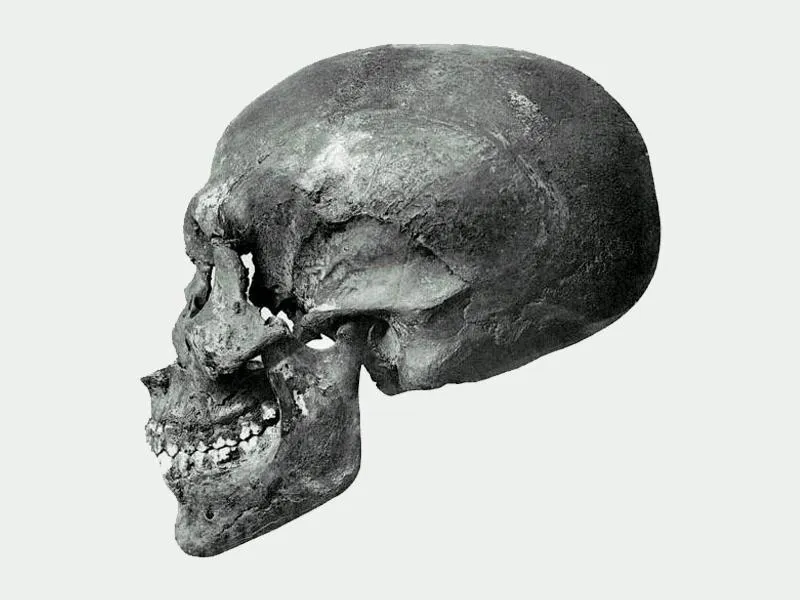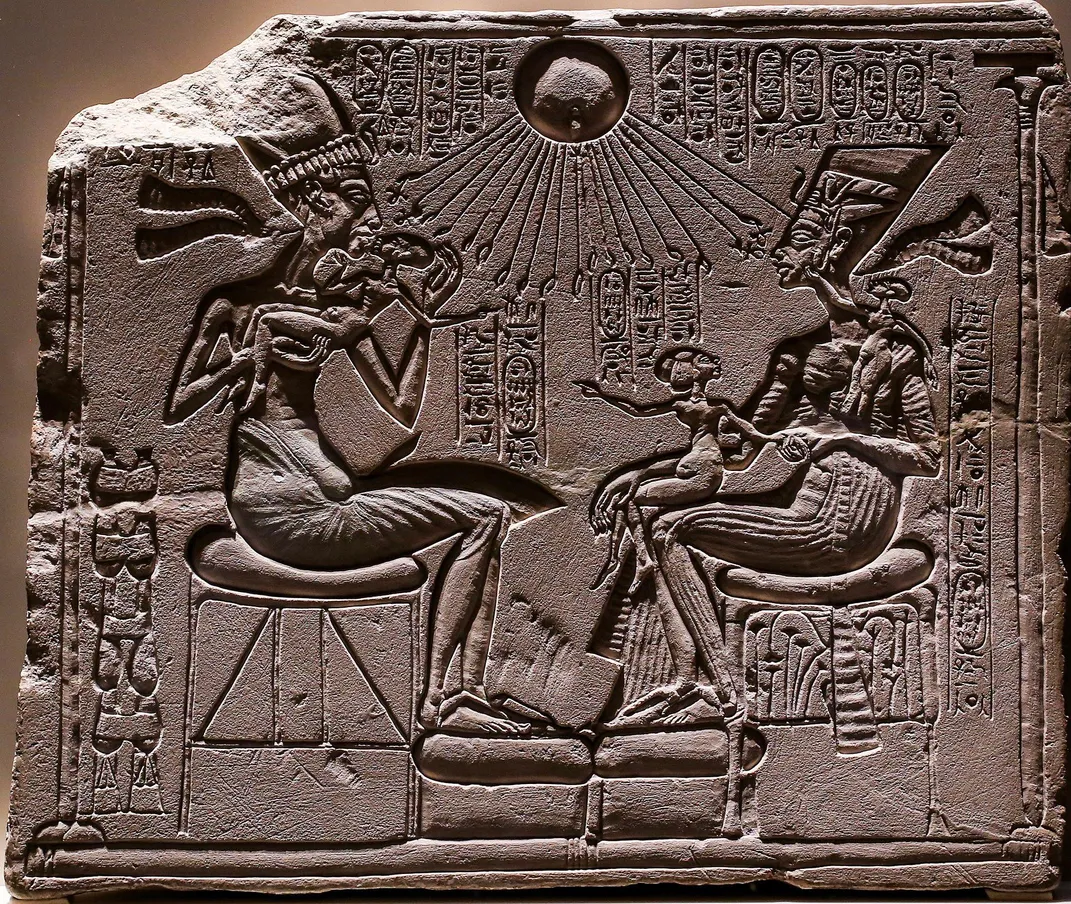Is This the Face of King Tut’s Father, Pharaoh Akhenaten?
New 3-D reconstruction visualizes what KV55, a mummy long thought to be the ancient Egyptian ruler, may have looked like
:focal(403x251:404x252)/https://tf-cmsv2-smithsonianmag-media.s3.amazonaws.com/filer/fb/c7/fbc729f8-c645-41a7-a697-a8926f09ad06/akhenaten.jpg)
Researchers have reconstructed the face of an ancient Egyptian pharaoh who may have been King Tutankhamun’s father, Akhenaten.
As Mindy Weisberger reports for Live Science, experts from the Forensic Anthropology, Paleopathology, Bioarchaeology Research Center (FAPAB) in Sicily used facial reconstruction technology to approximate the appearance of a mummy known as KV55. Discovered in 1907 at a burial site near Tut’s tomb in the Valley of the Kings, the remains are shrouded in mystery, with scholars debating both the ruler’s identity and his connection to the famed boy king.
Per a statement, the team worked with Cicero André da Costa Moraes, an expert in 3-D facial reconstruction who most recently revealed the likenesses of two medieval Czech dukes, to generate the image.
First, writes Alicia McDermott for Ancient Origins, the researchers drew on published data and images from previous studies to create a 3-D model of the skull. They then used a reconstruction technique known as the Manchester method to add facial muscles, eyes, fat deposits and skin.
“[F]acial muscles and ligaments [were] modeled on the skull model according to the rules of anatomy,” FAPAB director and co-founder Francesco Galassi tells Live Science. “The skin is placed on top of this, and the tissue thicknesses are average values that have been scientifically determined.”

The finished recreation depicts KV55 as a tan-skinned male with a prominent jaw and almond-shaped eyes. He appears without hair, jewelry and other embellishments—an approach that enabled the team “to focus on the facial traits of this individual,” as FAPAB notes in a Facebook post. (Because skeletal analysis doesn’t show “textural information” like hairstyles and facial markings, these omissions may have actually helped the archaeologists create a more faithful rendering of the pharaoh’s face.)
Speaking with Ancient Origins, FAPAB researcher Michael E. Habicht says, “The skin, eyes and shape of the ears are approximations based on the fact that this is an Egyptian, which accounts for brown eyes and a skin complexion that is still common in Egypt today.”
As Live Science reports, the mummy’s bones indicate that he was around 26 when he died, though he may have been as young as 19 to 22. Historical records, meanwhile, suggest that Akhenaten died when he was around 40.
“Some archaeologists tend to assume that [Akhenaten] began his reign as a young adult rather than as a child,” Galassi tells Live Science. “For this reason, there have been continued attempts [to] consider KV55 older than the actual anatomy indicates.”
Akhenaten ruled over Egypt between roughly 1353 and 1336 B.C. He was the first monarch to introduce monotheism to the kingdom, advocating for his subjects to solely worship Aten, an Egyptian sun god. The pharaoh’s successors, including his son Tutankhamun, “were mostly scathing about his reign,” accusing him of heresy and eventually attempting to “remove him from history entirely,” wrote Peter Hessler for National Geographic in May 2017.

Per the statement, a number of artifacts found in KV55’s tomb point to his identity as Akhenaten: for instance, bricks inscribed with the pharaoh’s name, as well as a sarcophagus and canopic jars associated with Kiya, Akhenaten’s concubine.
Scholars originally posited that the mummy belonged to Queen Tiye, mother of Akhenaten and grandmother of Tutankhamun. Later research, however, identified the skeleton as a male, according to the American Research Center in Egypt. Archaeologists then suggested that the bones belonged to Smenkhkare, Akhenaten’s enigmatic younger brother.
In 2010, DNA testing established KV55 as the son of Amenhotep III and father of Tutankhamen—a lineage that lines up with Akhenaten, as CBS News reported at the time. Some experts have contested this conclusion on the grounds that incest was common in ancient Egyptian royal dynasties and may have “complicated” the results, notes the statement.
“While several theories exist and conflicting arguments will always characterize the debate on KV55, using the available anthropological evidence we have chosen to focus on the facial traits of this individual,” write the researchers in the Facebook post.
FAPAB plans to publish a more thorough analysis of the reconstruction in the near future.
/https://tf-cmsv2-smithsonianmag-media.s3.amazonaws.com/accounts/headshot/Isis_Davis-Marks_thumbnail.png)
/https://tf-cmsv2-smithsonianmag-media.s3.amazonaws.com/accounts/headshot/Isis_Davis-Marks_thumbnail.png)